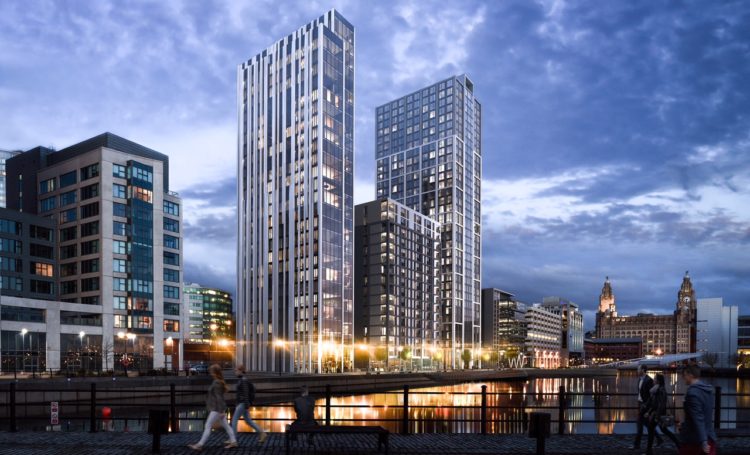Latest study from City Residential says there has been a fall-off in planning applications for new city centre schemes but adds buy-to-rent and housing associations may fill the gap. Tony McDonough reports

Liverpool’s residential development pipeline is is experiencing a “sharp” slowdown with bad publicity over collapsed schemes and “fractional selling” impacting on investor confidence, a new report claims.
The latest report from City Residential says there is always a natural fall in the development pipeline around September as schemes complete in time for the annual increase in demand from students.
City Residential managing director, Alan Bevan, says the gap is usually filled quickly by new planning applications but says that in the last three to six months there has been a fall-off in applications.
Market conditions
In his report, he said: “There are a few reasons why the pipeline is slowing sharply. Perhaps the most obvious reason is that market conditions are now less favourable than they have been in the past.
“The fractional sales model that dominates the current market has definitely slowed. While the issues over ‘stalled’ schemes has obviously had an effect on the market there are also concerns over Brexit, cautiousness over future price growth and worries around rental supply/demand.
“Many of the proposed developments with planning were also bought by developers using land options. With the expiry of these options coinciding at a time where the market is more challenging it is of little surprise to see some fall off in anticipated developments.”
Reduced supply
Mr Bevan added that there is also a lack of suitable development land on prime city centre sites, and said: “After a huge amount of permitted development office-to-residential conversions there are also a much reduced supply of further office buildings to convert into residential.”
However, he also believes the gap in the market created the withdrawal of many fractional sale developers opens up an opportunity for investments from BTR (build-to-rent) schemes and registered providers (RP) or housing associations.
One such scheme under construction is Hive City Docks, a 30-storey tower at Peel’s Liverpool Waters development being built for Your Housing Group that will comprise 278 apartments.
Market share
Mr Bevan added: “The resulting slowdown in pipeline may actually work in the market’s favour by allowing some of these institutional developers/funds/providers to enter the market/increase their market share.
“What about the future? While some commentators may anticipate that the increased interest in the market from the BTR/RP developers may cause upward pressure on land values the opposite is likely to happen.
“Institutional investors/developers have very often paid slightly less for sites that the fractional sale developers. The lessening in activity from the latter may well actually result in land values pulling back slightly from their recent highs.”
‘Storm brewing’
Later in the report, he added: “While this quarter has been busy and productive we can’t help but feel that there may be a small storm brewing on the horizon.
“The continued uncertainty over Brexit, a slowing pipeline for development and questions of continued demand for fractional sale developments present a potentially challenging environment for the development community.”

